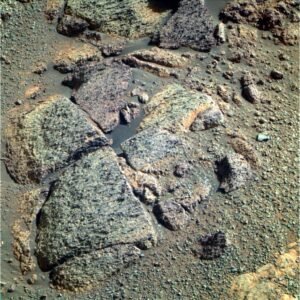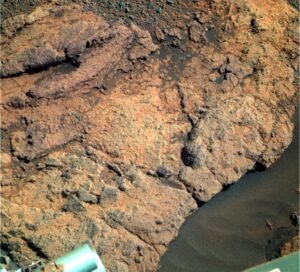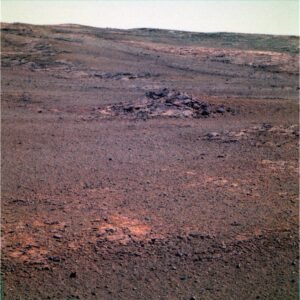Latest Posts
WHAT ARE WE PROTECTING MARS FROM? AND WHY DO WE CARE?
In this funny video we will enjoy a meeting organized by SETI and chaired by Seth Shostak in which Dr. Robert Zubrin, president and founder of the Mars Society and aerospace engineer at Lokeed Martin astronautics in Denver, is compared with Dr. John Rummel, SETI scientist and official representative of COSPAR Planetary Protection.We immediately notice the disruptive and disrespectful way in which Dr. Robert Zubrin poses both towards Seth Shostak and John Rummel.The arguments used are definitely laughable, as he does not deny the possibility that there is indigenous life on Mars, he simply says that we should give a damn and close the international office of Planetary Protection.His workhorse is the panspermia (see https://it.wikipedia.org/wiki/Panspermia), to which he clings tenaciously to try to demonstrate that any talk about contamination and reverse contamination is completely useless.We would like to remind Dr. Zubrin that already the colonizations from one continent to another on Earth have had a strong impact in the spread of diseases and in the disruption of local ecosystems. Imagine then what could happen from one planet to another!We would also like to point out that human history is dotted with epidemics literally born from nothing and that there is no evidence that these epidemics can not be related to meteorites arrived from space, giving for good the theory of panspermia so dear to him. We conclude that his battle horse is actually a Trojan horse that hides inside it other interests.Interests that go miserably in favor of his foundation, his personal lust and at the expense of science, the Earth’s ecosystem and probably also the Martian one.Finally we would like to point out to our dear Dr. Zubrin how dishonest it is to try to paint Mars as a barren rock to be colonized while knowing very well that the reality is very different. Ultimately, what would be the point of colonizing a barren rock millions of miles away when we have the Moon just around the corner? It means then that Dr. Zubrin knows very well that Mars is much more hospitable than the Moon and is much more Earth-like than he would like to make believe! Is it so or not, dear Dr. Zubrin? This post has been automatically translated. See the original post here.
How will humans do on Mars?
“The possibility of getting men to Mars is becoming more and more concrete year after year.But is it really possible to get to Mars?Will it be possible to live on Mars?” A very enjoyable interview with David A. Weintraub professor of astronomy at Vanderbilt University in Neshville, Tennessee, and author of the book “Life on Mars –What to Know Before We Go” https://press.princeton.edu/titles/11233.html ). This post has been automatically translated. See the original post here.
Curiosity tries to return to its rhythm
Continue the attempts of the Curiosity team to restore the functionality of the drill. In February of this year they had already tried a new technique that however had not produced enough material for analysis.This time they’ll try to apply a greater thrust using the robotic arm, in an attempt to produce a perforation deep enough to collect a greater amount of material useful for analysis.Fingers crossed…. This post has been automatically translated. See the original post here.
Opportunity Sol 5088, May 18, 2018
Between 01:56:40 UTC and 02:00:02 UTC Opportunity’s Pancam takes three images with narrow-band filters in the three basic colors, from which it was possible to derive this true color image of this very special looking rock formation.The original images (especially in green and blue) have a high level of “noise” and then I applied a noise filter to all three colors to eliminate the spurious dots (“despeckle” filter).It immediately jumps to the eye as the majority of these rocks have a reddish coloration on the edges, while the flat upper surfaces fade into shades between green and bluish-green and in a couple of rocks even purple. RGB HD processed image: https://image.ibb.co/hoggwJ/Oppy_Sol5088.jpg Original BN images: Red (735nm with 20nm bandwidth)01:56:40 UTC15:21:17 LTST https://mars.nasa.gov/mer/gallery/all/1/p/5088/1P579875353EFFD2FCP2380L2M1.HTML Green (535nm with 20nm bandwidth)01:58:20 UTC15:22:54 LTST https://mars.nasa.gov/mer/gallery/all/1/p/5088/1P579875453EFFD2FCP2380L5M1.HTML Blue (432nm with 32nm bandwidth)02:00:02 UTC15:24:33 LTST https://mars.nasa.gov/mer/gallery/all/1/p/5088/1P579875555EFFD2FCP2380L7M1.HTML This post has been automatically translated. See the original post here.
Two very young impact craters
MRO has discovered more than 700 sites of recent impacts on Mars. Often a bolide will fragment on impact with the atmosphere, thus generating clusters of new craters. Here, in fact, two new craters are observed, both with the same features and relatively bluish colored jets surrounded by a dark impact halo (where dust has been removed or redistributed) and arc marks extending to the northwest and northeast. These features are produced by an oblique impact angle with the bolide coming from the north. Translation of Alfred McEwen’s commentary This post has been automatically translated. See the original post here.
Opportunity Sol 5087, May 17, 2018
Between 00:39:34 UTC and 00:43:04 UTC Opportunity’s Pancam takes three images with narrowband filters in the three basic colors, from which it was possible to derive this true color image of a very interesting rock formation.The original images (especially in green and blue) have a high level of “noise” and I have therefore applied a noise filter to all three colors to eliminate the spurious dots.The morphology is very distinctive, as are the color gradients that tint the surface of the rock itself. RGB HD processed image: https://image.ibb.co/cFjEyy/Oppy_Sol5087.jpg Original BN images: Red (735nm with 20nm bandwidth)00:39:34 UTC14:44:41 LTST https://mars.nasa.gov/mer/gallery/all/1/p/5087/1P579784332ESFD2FCP2557L2M1.HTML Green (535nm with 20nm bandwidth)00:41:19 UTC14:46:23 LTST https://mars.nasa.gov/mer/gallery/all/1/p/5087/1P579784437ESFD2FCP2557L5M1.HTML Blue (432nm with 32nm bandwidth)00:43:04 UTC14:48:05 LTST https://mars.nasa.gov/mer/gallery/all/1/p/5087/1P579784542ESFD2FCP2557L7M1.HTML This post has been automatically translated. See the original post here.
Opportunity Sol 5085, May 14, 2018
Between 23:05:59 UTC and 23:08:45 UTC Opportunity’s Pancam takes three images with narrowband filters in the three basic colors, from which it was possible to derive this true color image of the Martian landscape.The original images (especially in green and blue) have a high level of “noise” and I have therefore applied a noise filter to all three colors to eliminate the spurious dots.We can therefore admire this glimpse of a rather colorful landscape, with a milky sky (at least on the horizon) as a background, perhaps due to the presence of haze. RGB HD image processed: https://image.ibb.co/nEtOOy/Oppy_Sol5085.jpg Original BN images: Red (735nm with 20nm bandwidth)23:05:59 UTC14:30:30 LTST https://mars.nasa.gov/mer/gallery/all/1/p/5085/1P579605928EFFD2FAP2378L2M1.HTML Green (535nm with 20nm bandwidth)23:08:32 UTC14:32:59 LTST https://mars.nasa.gov/mer/gallery/all/1/p/5085/1P579606081EFFD2FAP2378L5M1.HTML Blue (432nm with 32nm bandwidth)23:08:45 UTC14:33:12 LTST https://mars.nasa.gov/mer/gallery/all/1/p/5085/1P579606094EFFD2FAP2378L7M1.HTML This post has been automatically translated. See the original post here.
Mars Helicopter Technology Demonstrator
A few days ago came out the news of a small helicopter that will be part of the NASA Mars 2020 mission (see post https://www.facebook.com/PianetaMarte.MdM/posts/1699712090111977). For those who are interested in the technical specifications of this project, I recommend reading this interesting NASA/JPL paper presented in early January at the Atmospheric Flight Mechanics Conference in Kissimmee, Florida. This post has been automatically translated. See the original post here.
Vita su Marte – Indagine visiva e implicazioni per la protezione planetaria
Harry Rabb, Kirkkonummi, Finland, 2013-2018.Updated 24th of April 2018. A beautiful free downloadable book that illustrates and explains a whole range of clues, visual and otherwise, in favor of the presence of life on Mars. This post has been automatically translated. See the original post here.
NASA’s next mission will bring with it a helicopter to fly to Mars
It will be the first helicopter that we will fly on another planet (maybe!) and will have to “turn the blades” ten times the speed of a normal helicopter!It will be like flying a helicopter on Earth at an altitude of more than 35 km; quite a challenge! This post has been automatically translated. See the original post here.


